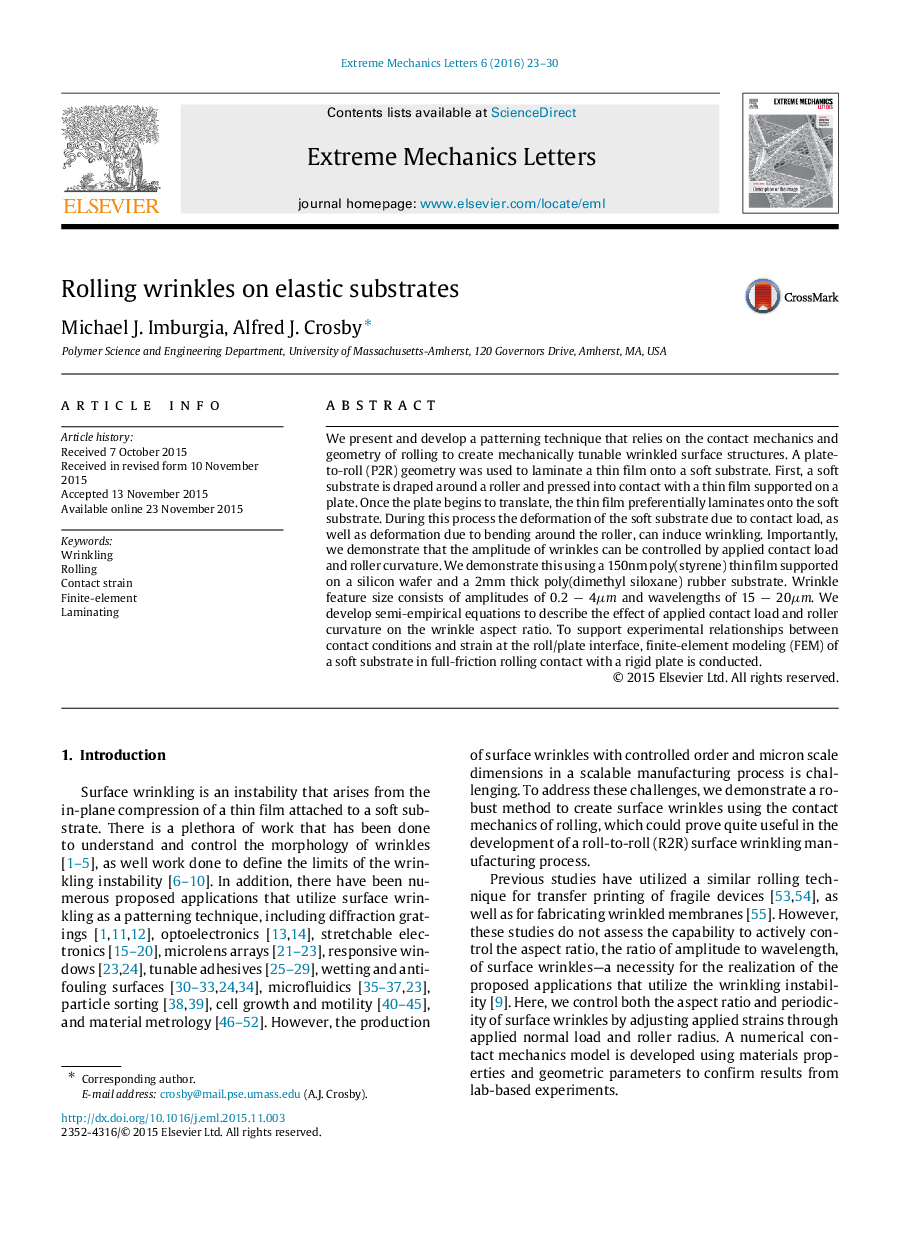| Article ID | Journal | Published Year | Pages | File Type |
|---|---|---|---|---|
| 778473 | Extreme Mechanics Letters | 2016 | 8 Pages |
We present and develop a patterning technique that relies on the contact mechanics and geometry of rolling to create mechanically tunable wrinkled surface structures. A plate-to-roll (P2R) geometry was used to laminate a thin film onto a soft substrate. First, a soft substrate is draped around a roller and pressed into contact with a thin film supported on a plate. Once the plate begins to translate, the thin film preferentially laminates onto the soft substrate. During this process the deformation of the soft substrate due to contact load, as well as deformation due to bending around the roller, can induce wrinkling. Importantly, we demonstrate that the amplitude of wrinkles can be controlled by applied contact load and roller curvature. We demonstrate this using a 150nm poly(styrene) thin film supported on a silicon wafer and a 2mm thick poly(dimethyl siloxane) rubber substrate. Wrinkle feature size consists of amplitudes of 0.2−4μm0.2−4μm and wavelengths of 15−20μm15−20μm. We develop semi-empirical equations to describe the effect of applied contact load and roller curvature on the wrinkle aspect ratio. To support experimental relationships between contact conditions and strain at the roll/plate interface, finite-element modeling (FEM) of a soft substrate in full-friction rolling contact with a rigid plate is conducted.
